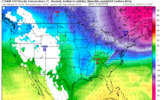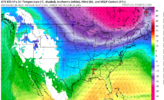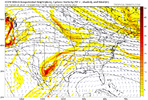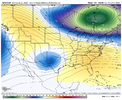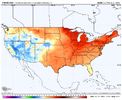rburrel2
Member
Here you can see how the euro goes bonkers with adiabatic cooling at 850mb from the SE flow lifting over the surface wedge/mountains... That's all thanks to a robust shortwave going neutral tilt over the MS river. On the other hand, the gfs has a faster/weaker/flatter wave and keeps winds out of the SW at 850mb as the storm passes over so no cooling at 850mb.